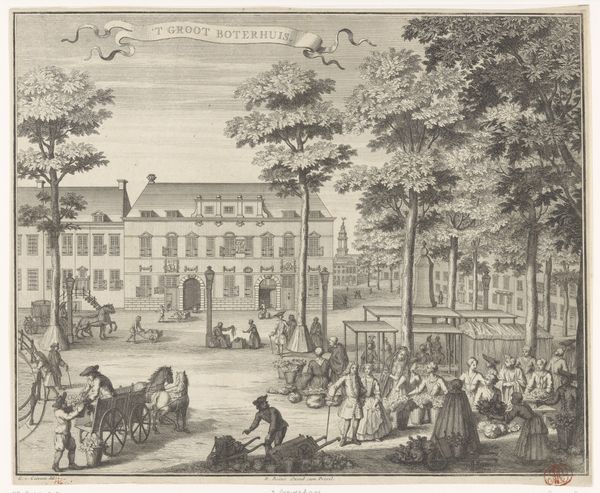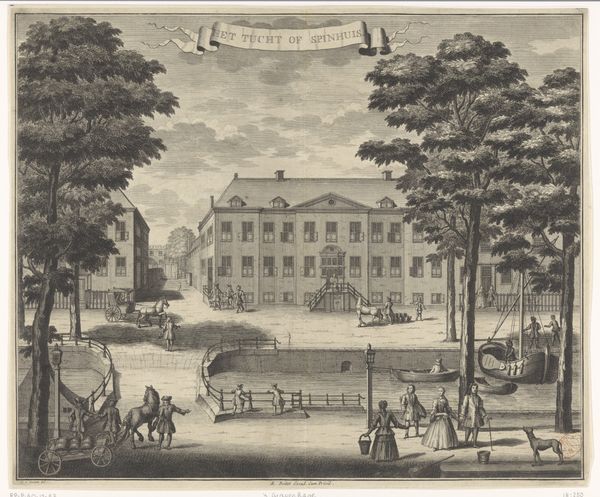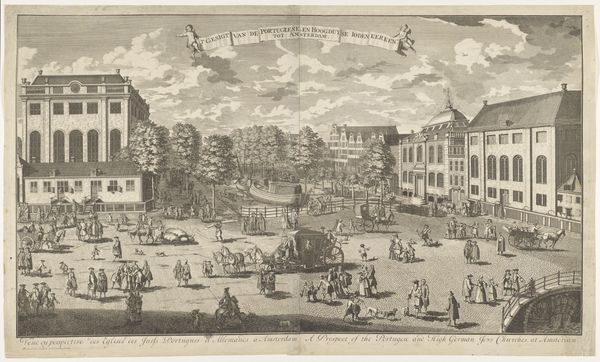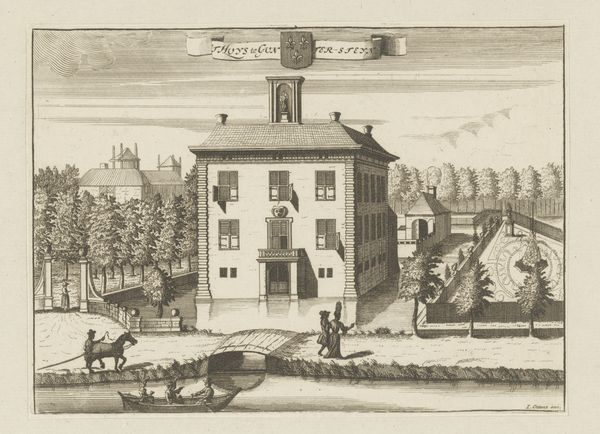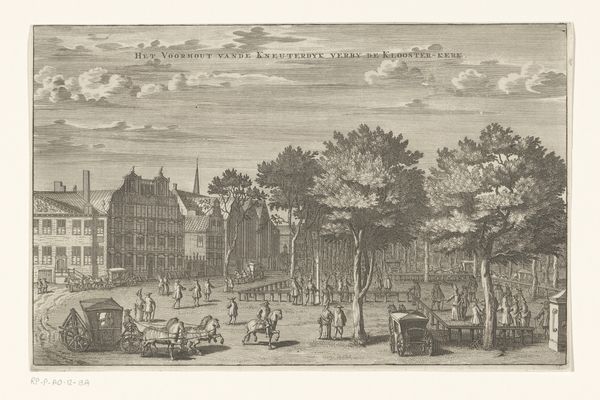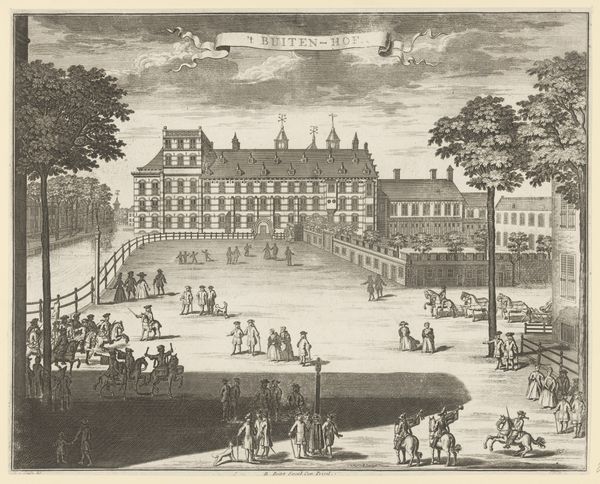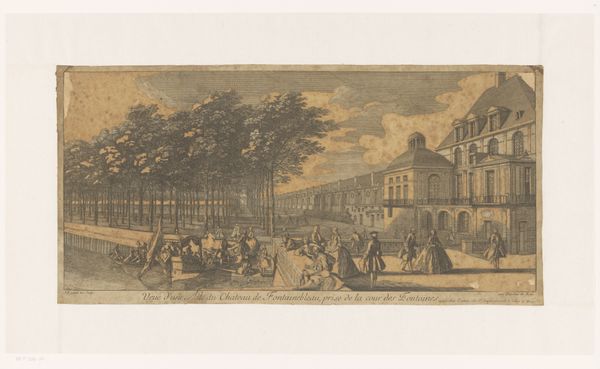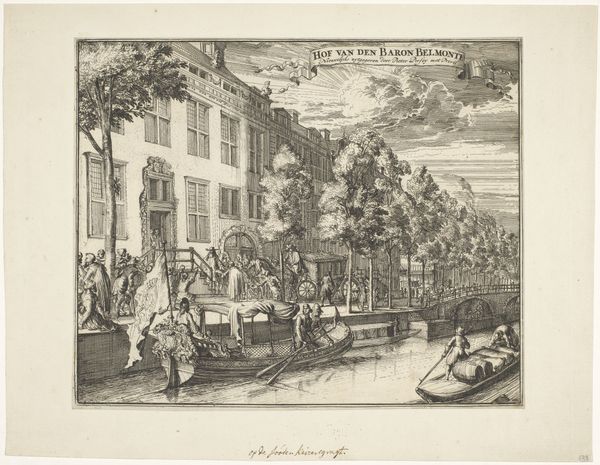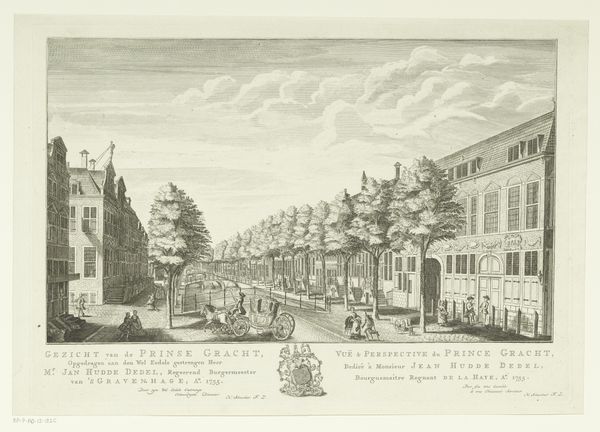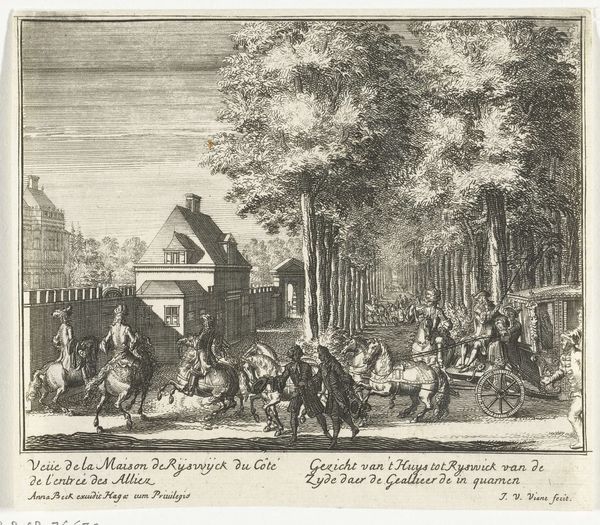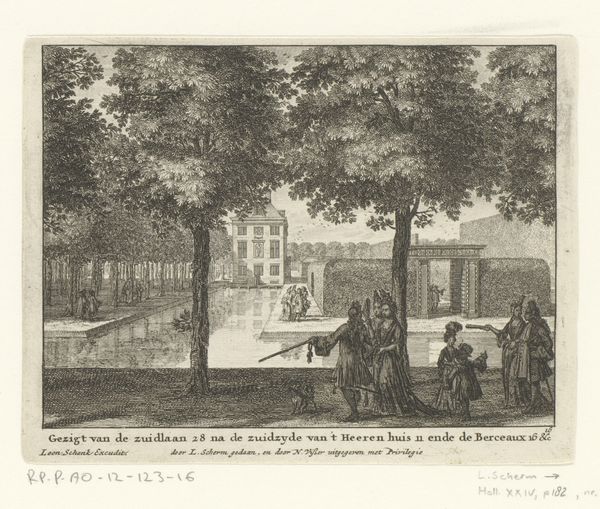
print, engraving
#
baroque
# print
#
landscape
#
cityscape
#
genre-painting
#
engraving
Dimensions: height 277 mm, width 339 mm
Copyright: Rijks Museum: Open Domain
Curator: This is Jan Caspar Philips' "Gezicht op het Boterhuis te Den Haag," created sometime between 1730 and 1736. It’s an engraving, currently held here at the Rijksmuseum. Editor: It strikes me as remarkably detailed, given the medium. I'm immediately drawn to the interplay of light and shadow across the cobblestones. There's almost a snapshot quality in capturing this very ordinary urban setting. Curator: Absolutely, and that ordinariness is key. Genre scenes like this offer us a valuable lens through which to examine social dynamics of the time. Note the presence of figures from various social strata mingling, or not, within the same frame. Who has access to the comfort of a carriage? Whose labor maintains the smooth operation of the market? These are questions embedded in this image. Editor: Indeed. And look closely at that butter market, the very reason this scene exists! The arrangement of the stalls, the handling of the goods—it speaks volumes about the daily routines, the material culture of the time. The focus isn’t necessarily on individual artistry, but rather on the system that allows such marketplaces to exist. Curator: And it goes further, doesn't it? We have a public building as a focal point for social interactions, gender dynamics playing out with different labor and social roles shown in their clothing and activities. The composition and the details make it clear that certain groups had certain accesses, and these were gendered as much as anything else. The playful dog shows an accessible type of playfulness for upper-class kids, perhaps, but the whole scene is about accessing materials to begin with. Editor: I hadn't considered it in that way. It almost feels as though the print functions as a form of early social documentation. The material conditions literally impress themselves upon the copper plate, revealing themselves for wider circulation and perhaps, eventually, commentary. Curator: Exactly, so the image works as a historical record, offering an intricate glimpse into the social structures of 18th-century Dutch society. It reflects the distribution of resources, labour and visibility in The Hague at the time. Editor: This piece shows us a moment in time that displays how intertwined class and economy was, but from a vantage point we’re left to observe, with its own positionality. Curator: Ultimately, "Gezicht op het Boterhuis te Den Haag" is more than just a pretty picture. It's a fascinating intersection of art, labor, and social commentary that continues to spark questions even today. Editor: It highlights that art can show us about the cultural landscapes we stand to inherit through commerce and societal standards, like here.
Comments
No comments
Be the first to comment and join the conversation on the ultimate creative platform.
